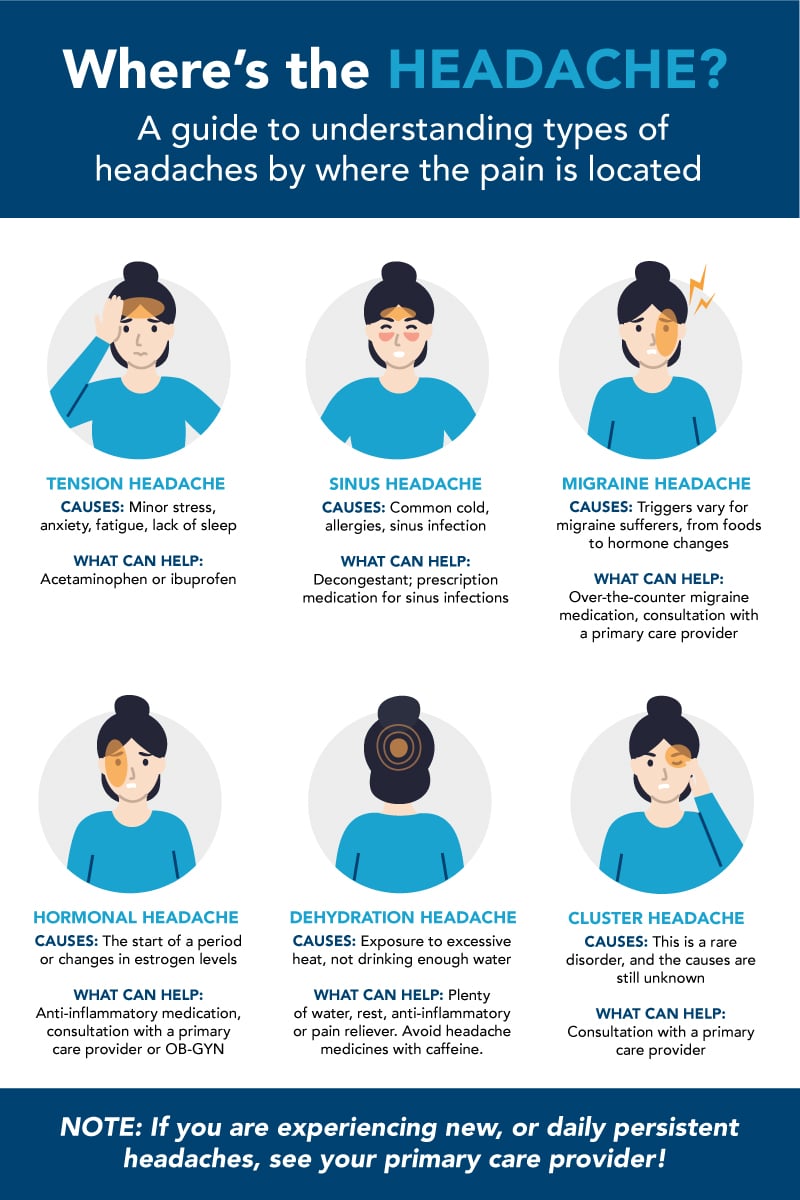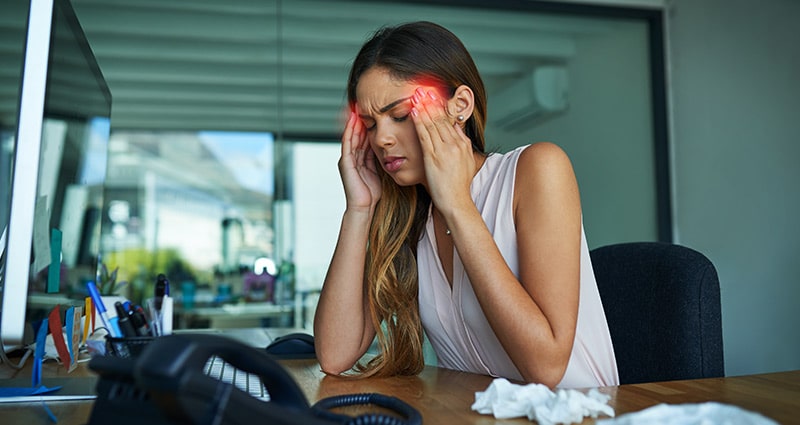Headaches can ruin your day. They can pull your focus and concentration during an important meeting. They can stop you from enjoying yourself during a family outing. And they can derail your plans for a night out with friends.
But knowing what type of headache you are dealing with just might be the key to understanding your triggers as well as what might help relieve the pain. Your primary care provider can help with that, too.
“If you are experiencing new, or daily persistent headaches, it is important to see your primary care provider for further evaluation,” says Ronni Naramore, DO, with St. Francis Primary Care at Royal Avenue. “A thorough history and physical exam can help differentiate between primary headaches, such as tension, migraine or cluster headaches, and secondary headaches, such as those caused by infection or vascular disease.”
Dr. Naramore says certain signs and symptoms identified during the history and physical exam can alert your doctor to more potentially serious underlying issues that might require neuroimaging or further testing to determine the underlying cause.
Some red flag symptoms include weakness, paralysis, neck stiffness, sudden onset of the worst headache in the patient’s life, personality changes, headache after trauma or headache that is worse with exercise.
We take a look at different types of headaches and where you are likely to feel the pressure, throbbing or numb pain. It’s important to note that there are around 150 types of headaches (!!!), but these are some of the most common.

Tension Headache
Location: Both sides of your head or wrapping around your head like a band.
This is the most common type of headache, and it’s usually caused by minor stress or anxiety, fatigue or lack of sleep. Acetaminophen or ibuprofen can help.
Sinus Headache
Location: All over the face but most prominent behind the eyes, forehead and bridge of the nose.
The buildup of mucus in your sinus cavities during a cold, allergy season or a sinus infection will usually lead to this type of headache. The pressure or dull ache might feel more intense when you bend over or lay in bed as the mucus moves around in your head.
A decongestant can help if the root cause is a cold, as can allergy medications if you typically deal with allergy symptoms. A sinus infection will likely require a prescription medication such as antibiotics from your primary care provider.
Migraine Headache
Location: One side of the head
After tension headaches, this is the second most common type of headache. People who suffer from migraines may have different triggers, such as certain foods, hormone changes or even shifts in the weather.
Symptoms can be mild, lasting only a few hours, or debilitating and lasting several days with sensitivity to light and nausea being common side effects. For that reason, it’s best to consult your primary care provider for options to help you manage the condition. For milder symptoms, over-the-counter migraine medicine is available.
Hormonal Headache
Location: One side of the head
Women who are starting their period and dealing with changes in estrogen levels might experience these headaches, which are like a migraine.
Anti-inflammatory medication can help reduce the pain. Similarly, women who are pregnant and going through hormone changes may experience these headaches as well, though their treatment options are different and should be determined with the help of your OB-GYN.
Dehydration Headache
Location: All over or centered at the front or back of the head
If you’ve been out in the heat and not drinking enough water, you may experience this type of headache. It can be accompanied by dizziness, dry mouth, heat cramps and other symptoms associated with dehydration.
Plenty of water is the answer, as well as rest and an anti-inflammatory or pain reliever. Avoid headache medicines that contain caffeine, which can actually make the symptoms worse.
Cluster Headache
Location: One side of the head but often targeted in and around the eye
People who suffer from cluster headaches usually experience them in clusters, such as several times a day over a period of days. While this type of headache is rare, it can cause sharp pain in the eye area, leading to symptoms such as a droopy or teary eye and a runny nose.
Your primary care provider can prescribe medications to manage this type of headache.




